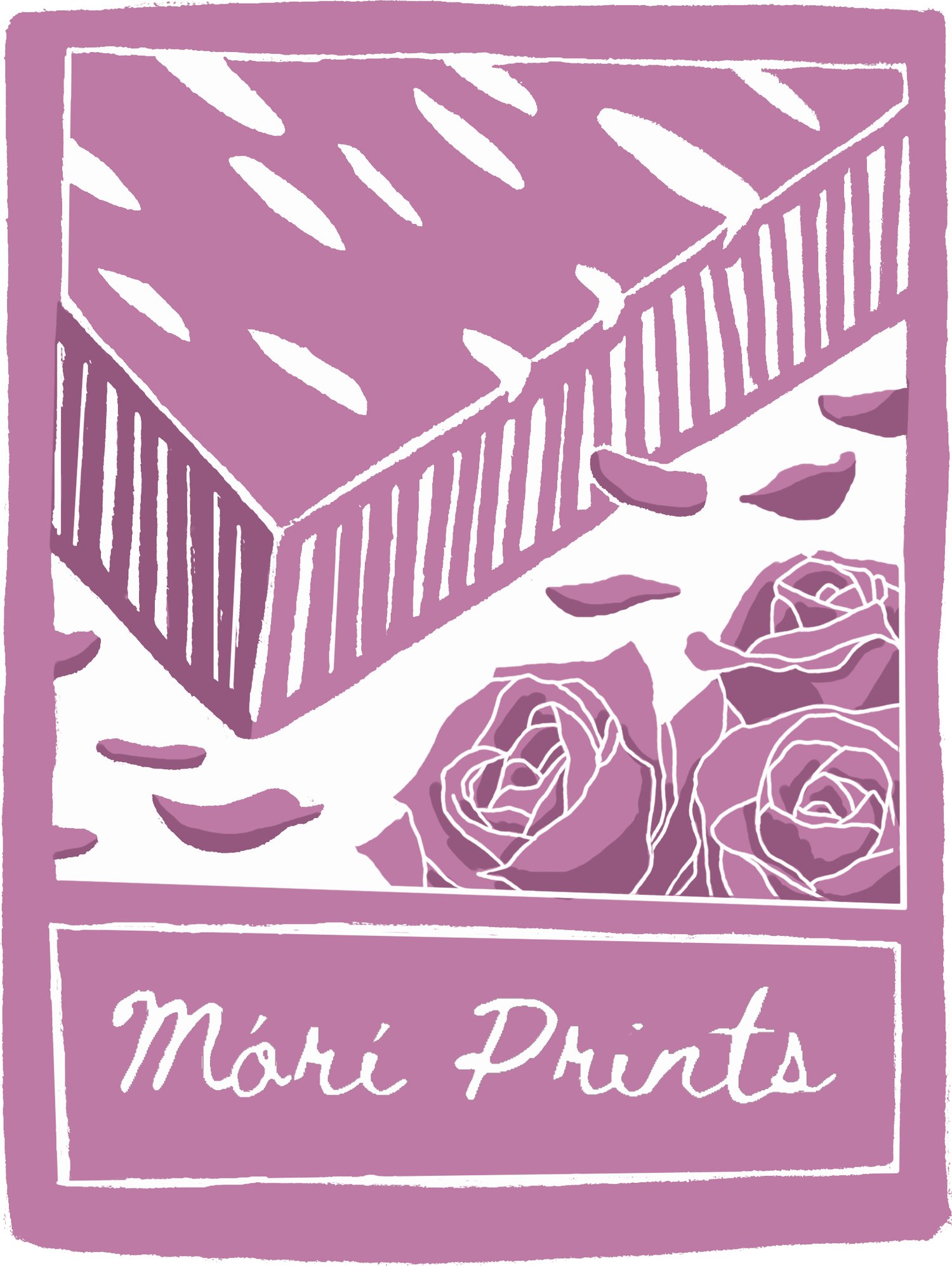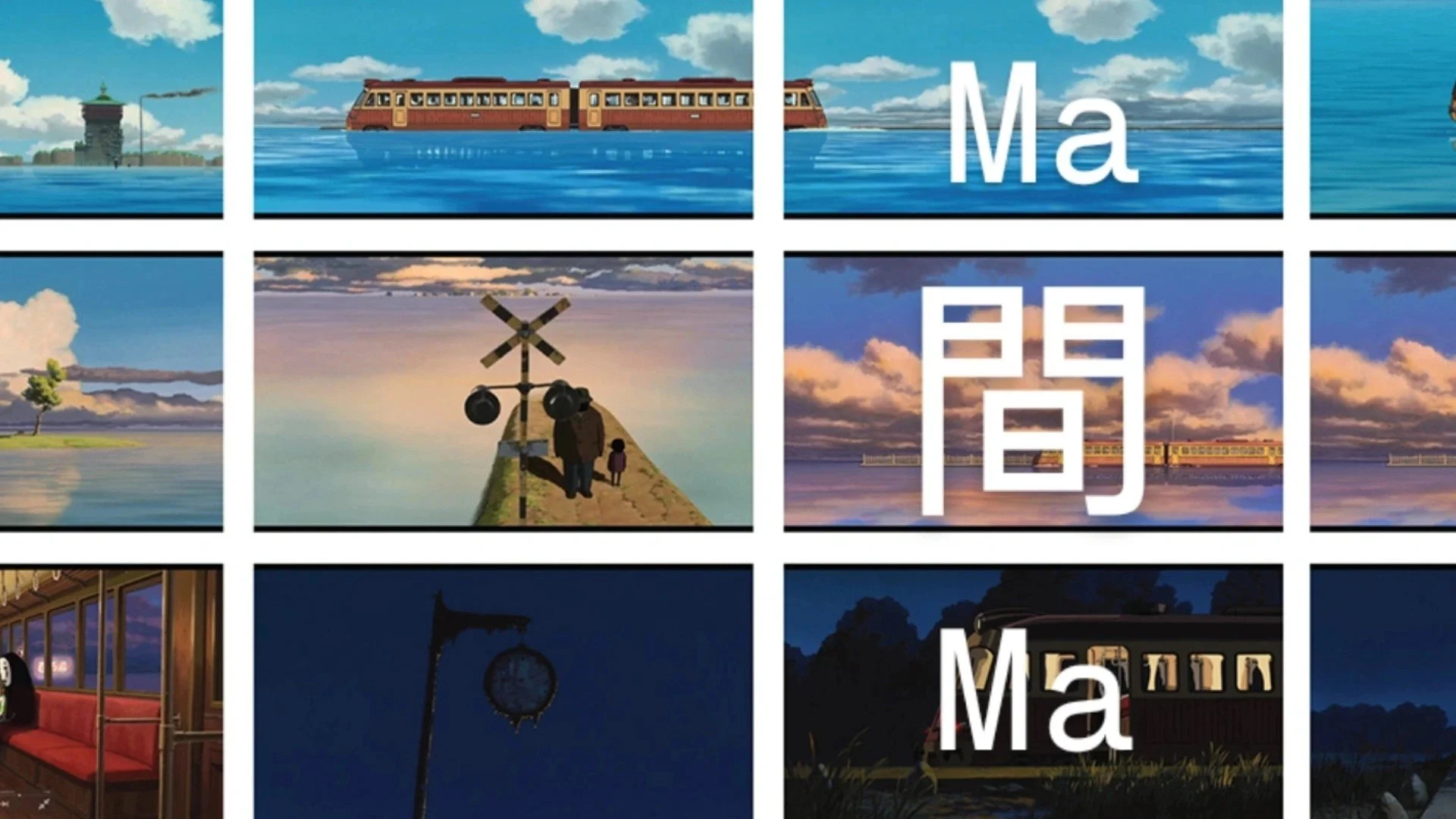the concept of ‘maa’...
So, this is something I have some across before and I think this website explains it really well.
To summarise, ‘'maa’ is a Japanese word that means ‘pause’, ‘space‘, ‘gap‘ etc. and refers to the space or stillness between objects and moments.
A wonderful example of this would be any of the Studio Ghibli movies. Let’s take Spirited Away as our first example. There is a well-known scene in the movie where Chihiro boards a train with No-Face. The animators could have simple shown her getting on the train and then in the next scene just shown her disembarking and continuing with the story. But instead, it takes its time. We stay on the train with them, seeing the landscape change around them, witness the different entities that come and go. There is a stillness to it. The journey is not brushed over. We sit and experience it with the characters. After all the craziness of the bathhouse, this pause was needed. It’s an opportunity to really process what Chihiro has just been through, both for her and for us the viewers. Just like in life, we need moments of reflection between all our busy schedules, otherwise it’s all just go-go-go..
This can also be seen in Ponyo. One scene that I love is when Sosuke and Ponyo sail in the magically enlarged boat. The water moves under and around them, they weave through the trees of a forest turned lake, odd fish swim with them, following along. So much love and care was put into those little scenes, where hardly any dialogue was spoken.
At times, you might feel like it’s dragging on, that nothing is happening and ‘when is it going to get to the good bit?’ But it is these little things, these small moments between the action that (not to sound too dramatic) fill my soul.
It’s the same feeling I get when I meditate or do breathing exercises. I feel full… calm… at peace.
Also, the food and cooking scenes. Ghah! If you’ve seen any Studio Ghibli stuff, you’ll know what I’m talking about. Why put so much time and effort into animating someone mixing honey into tea or adding slices of ham to a ramen bowl?
Well, why not?
But this concept of ‘maa’ is not just seen in film, but in art as well. (Although, we could argue that those food scenes are works of art, but let’s not get into that here.)
‘Maa’ means ‘pause’, ‘gap’, ‘space’… but it can also mean negative space. And if you are an artist, you know the use and power negative space can have on an image. I once heard negative space referred to as ‘useful emptiness’.
In the middle is a painting by Hasegawa Tohaku. Pine Trees depicts a forest in mist, only a few trees visible and the rest of the image empty.
To the left and right we have two flower arrangements. Ikebana (Japanese art of flower arranging) also uses negative space.
Honestly, you can find this negative space anywhere, in the gaps between buildings, trees, it happens organically and can really make a photograph or a drawing or even a flower arrangement more interesting to the eye.
To go back to Studio Ghibli, I was recently directed to a conversation between Hayao Miyazaki and American journalist Robert Ebert:
I [Robert] love the “gratuitous motion” in his [Miyazaki] films; instead of every movement being dictated by the story, sometimes people will just sit for a moment, or they will sigh, or look in a running stream, or do something extra, not to advance the story but only to give the sense of time and place and who they are.
“We have a word for that in Japanese,” he said. “It’s called ma. Emptiness. It’s there intentionally.”
[…] He clapped his hands three or four times. “The time in between my clapping is ma. If you just have non-stop action with no breathing space at all, it’s just busyness, But if you take a moment, then the tension building in the film can grow into a wider dimension. If you just have constant tension at 80 degrees all the time you just get numb.”
Which helps explain why Miyazaki’s films are more absorbing and involving than the frantic cheerful action in a lot of American animation. I asked him to explain that a little more.
“The people who make the movies are scared of silence, so they want to paper and plaster it over,” he said. “They’re worried that the audience will get bored. They might go up and get some popcorn.
But just because it’s 80 percent intense all the time doesn’t mean the kids are going to bless you with their concentration. What really matters is the underlying emotions–that you never let go of those.
If you’re interested in the whole conversation, you can read it by clicking the link below.
Anyway, I think ‘maa’ is a wonderful aesthetic and I would love to incorporate it more into my work. Let’s see if I can do it!









